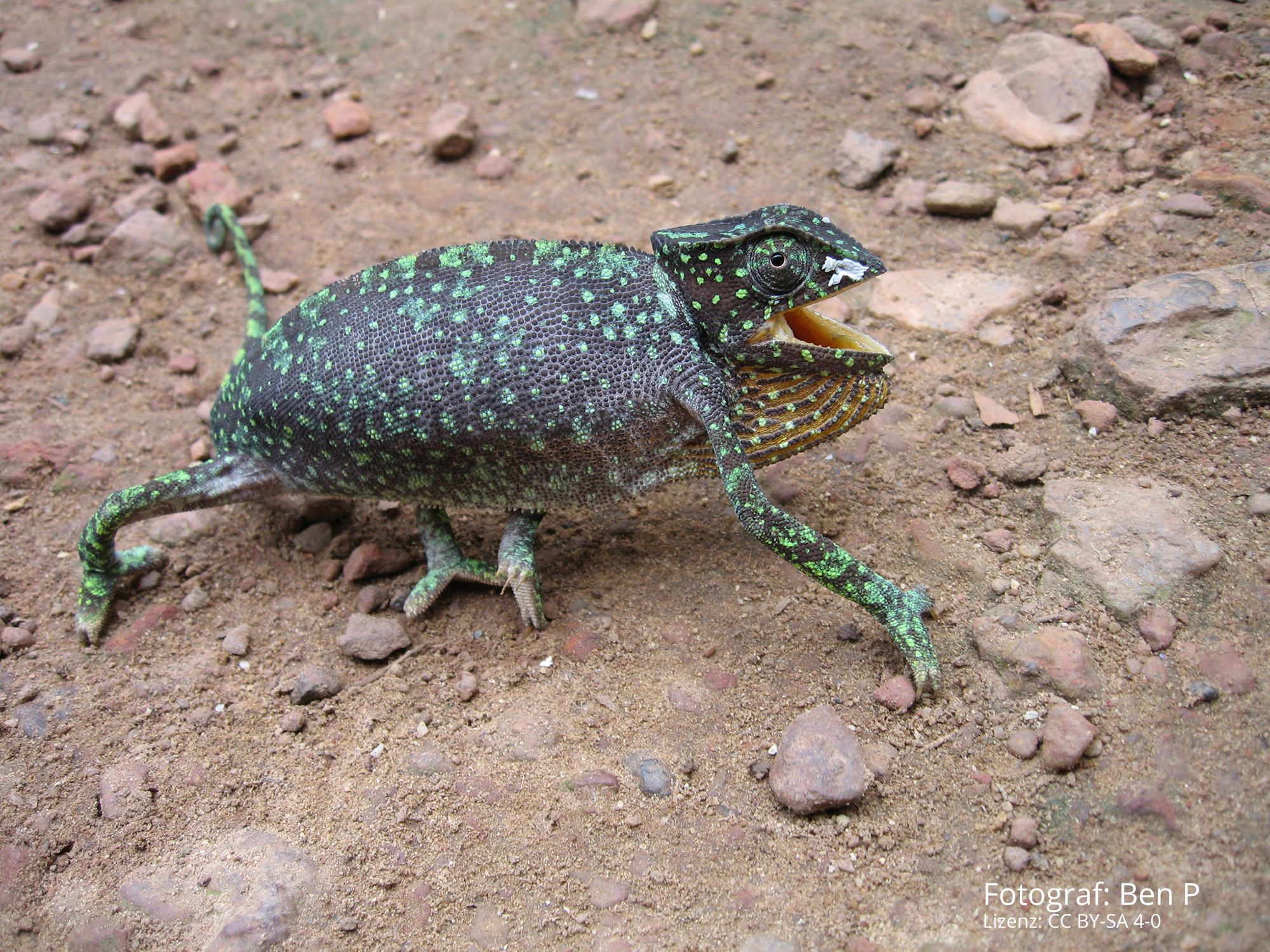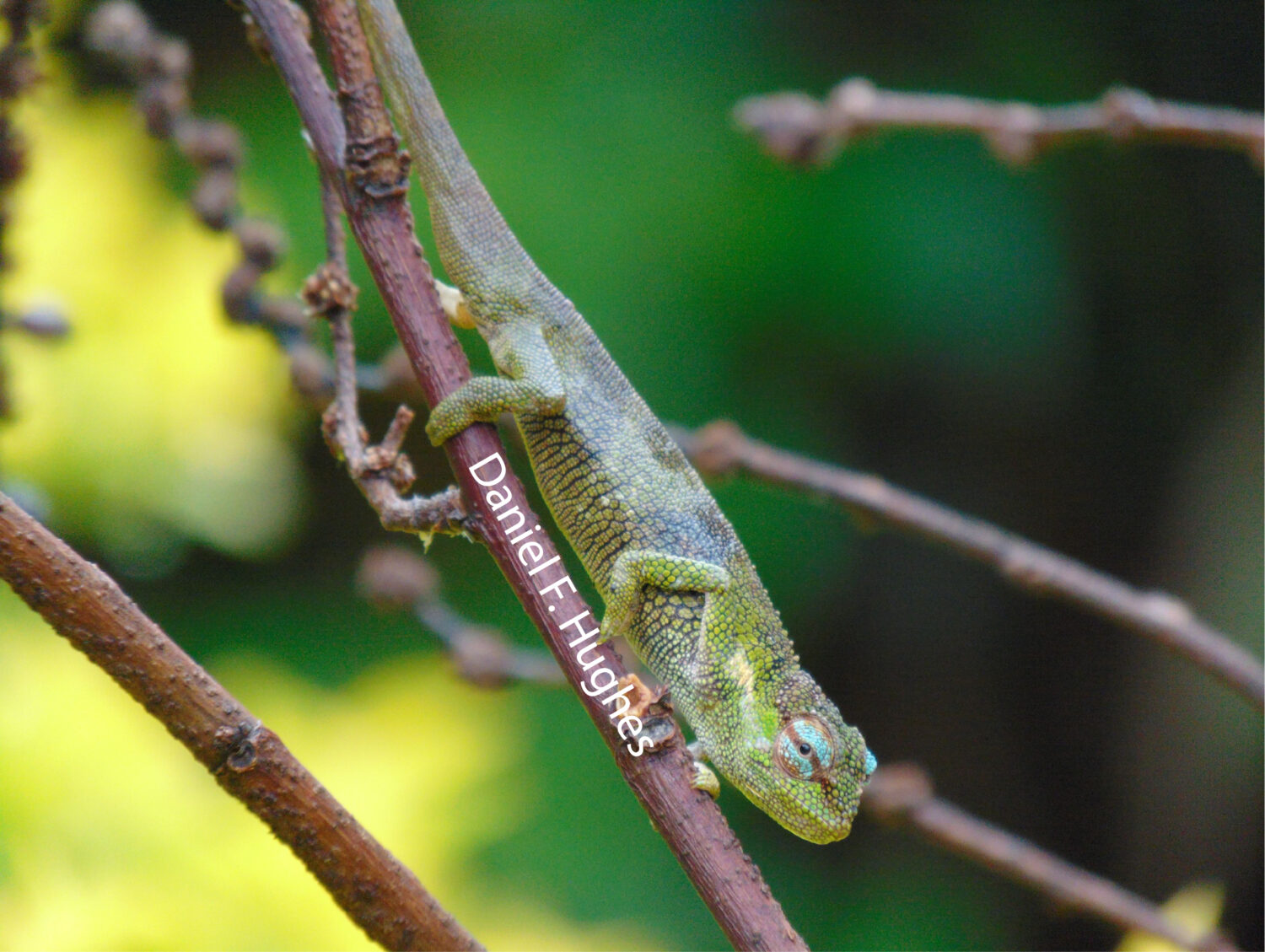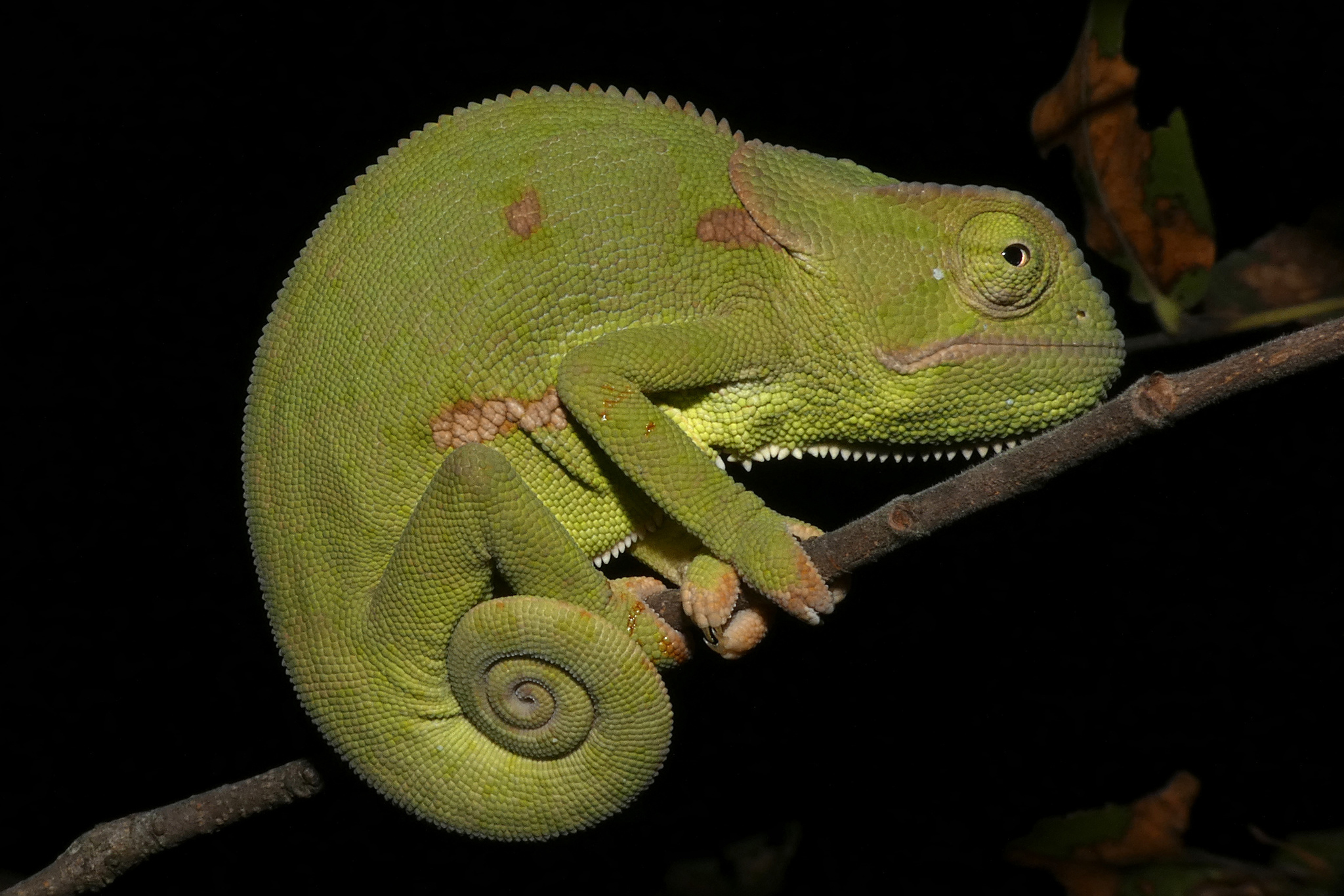Some chameleon species can vibrate like smartphones – most chameleon keepers know this. The best-known example of this ability is the Veiled Chameleon (Chamaeleo calyptratus). Two new articles by scientists from the USA now deal with what these vibrations are good for, how they occur, and how the Veiled Chameleon uses them in the first place.
Nine adult Veiled Chameleons (three females, six males) and six juvenile Veiled Chameleon (three females, three males) took part in the first experiments. Eleven of them were placed individually one after the other on a 77 cm long and 5 mm thick wooden stick. As soon as the chameleon sat in the middle, the wooden stick was subjected to vibrations of 25, 50, 150, 300, and 600 Hz. After each stimulus, a comparison was made to see whether the chameleon moved faster, slower, or the same as before. In order to motivate the young animals to move, a plant was placed near the end of the wooden stick. In addition, a small fan was used to imitate a light wind. For the second experiment, all 15 Veiled Chameleons were placed one after the other in a wooden box open at the top on a 122 cm long wooden stick. The animals were poked in the upper arm with a 27 G cannula. An acceleration sensor stuck to the helmet, or to the branch in the case of young animals, measured the reactions (vibrations) of the chameleons.
The results are exciting: Adult Veiled Chameleons reacted reliably to 50 and 150 Hz with “freezing”, i.e. complete immobility. Juveniles, on the other hand, reacted with this behaviour to other frequencies, namely 50 and 300 Hz. All adult Veiled Chameleons showed biotremors (vibrations). In the juveniles, the scientists could feel vibrations in all of them, but not all could be detected with the sensor. The vibrations were divided into two classes: “hoots” with an average of 7.5 dB and “mini-hoots” with -32.5 dB. The longer the larger vibrations lasted, the lower the frequency.
A second series of experiments used six adult Veiled Chameleons (four males, two females), four juvenile Veiled Chameleons, and one adult Chamaeleo gracilis. Two chameleons each were placed in a wooden box separated into two compartments by a plexiglass pane. Video recordings and accelerometers were used to measure their reactions to each other. Same-sex Veiled Chameleons, pairs of Veiled Chameleons, a Veiled Chameleon with a Chamaeleo gracilis and adult versus juvenile Veiled Chameleons were tested. The adult Veiled Chameleons showed vibrations in association with other adults in about 85% of the trials. The strength of the vibrations varied greatly from individual to individual. The clear trigger of the biotremors seemed to be visual contact with another chameleon. Threatening gestures and aggressive behaviour were more likely to cause vibrations. In the second series of experiments, a third variant of biotremors was discovered in addition to honking, rumbles.
Communication via biotremors in the Veiled Chameleon (Chamaeleo calyptratus): Part I – Biotremor production and response to substrate-borne vibrations
Kathryn L. Denny, Steve Huskey, Christopher V. Anderson, Michael E. Smith
Integrative and Comparative Biology, 2023
DOI: 10.1093/icb/icad085
Communication via biotremors in the Veiled Chameleon (Chamaeleo calyptratus): Part II – Social contexts
Kathryn L. Denny, Steve Huskey, Christopher V. Anderson, Michael E. Smith
Integrative and Comparative Biology, 2023
DOI: 10.1093/icb/icad084









